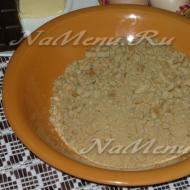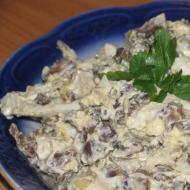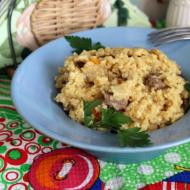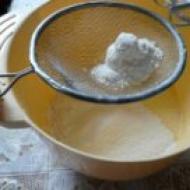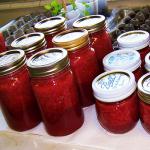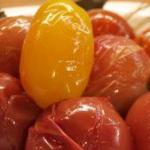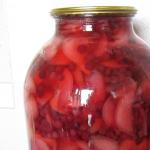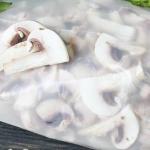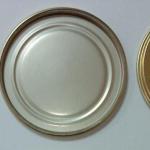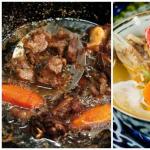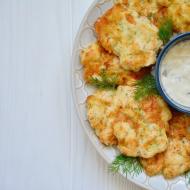
Chocolate cocoa tree: photos of varieties, how cocoa beans grow. Cocoa - varieties, benefits of products (butter, powder, cocoa beans), medical use, harm and contraindications, drink recipe. Photo of chocolate tree and cocoa fruits Cocoa cultivation
Where does chocolate start? Even a child knows the answer to this question. Chocolate starts with cocoa. This product has the same name as the tree it grows on. Cocoa fruits are widely used in the production of sweets, and a delicious drink is also prepared from them.
Story
The first mention of cocoa is found in writings dating back to 1500 BC. The Olmec people lived on the southern coast. Its representatives consumed this product as food. Later, information about this fruit appears in historical writings and drawings of the ancient Mayan people. They considered the cocoa tree sacred and believed that the gods presented it to humanity. Only leaders and priests could drink the drink made from these beans. Later, the Aztecs adopted the culture of growing cocoa and preparing the divine drink. These fruits were so valuable that they could buy a slave.
The first European to try a drink made from cocoa was Columbus. But the famous navigator did not appreciate it. Perhaps the reason for this was the unusual taste of the drink. Or perhaps the reason was that chocolatl (as the aborigines called it) was prepared with the addition of many ingredients, including pepper.
A little later, the Spaniard Cortes (conqueror of Mexico) arrived in the same territories, and was also presented with a local drink. And soon cocoa appears in Spain. The history of cocoa and chocolate in Europe begins in 1519. For a long time, these products were available only to the nobility and monarchs, and for 100 years they were not exported outside of Spain. After some time, overseas fruits began to spread throughout Europe, instantly gaining fans and connoisseurs.
All this time, cocoa was used to prepare an exquisite drink. It was only when the beans reached Switzerland that a local confectioner made a solid chocolate bar. But for a long time these delicacies were available only to the nobility and the rich.
general information
The cocoa tree is evergreen. Its botanical name is Theobromacacao. It can reach a height of 15 meters, but such specimens are extremely rare. Most often, the height of trees does not exceed 8 meters. The leaves are large, shiny, and dark green in color. Cocoa flowers are small, up to 1 cm in diameter, the petals have a yellow or red tint. They are located directly on the tree trunk itself on small petioles-peduncles. The fruits can weigh up to 0.5 kg and reach 30 cm in length. They are shaped like a lemon, in the middle of which you can see seeds about 3 cm long. The pulp of the fruit can contain up to 50 seeds. If you translate this name of this plant from Latin, you get “food of the gods.” The cocoa tree grows in South America, Southeast Asia, Australia and West Africa.

Growing this plant is hard work, as it is very demanding to care for. For good and regular fruiting, high temperatures and constant humidity are required. This climate occurs only in the equatorial region. It is also necessary to plant the cocoa tree in an area where it will not receive direct sunlight. Trees should grow around to create natural shade.
Composition of cocoa fruit
Analyzing the composition of cocoa, you can spend a long time listing the elements and substances included in it. Recently, many have begun to pay much attention to raw cocoa beans and classify them as so-called “superfoods”. This opinion is being carefully studied, and no one has yet given definitive data on this.
Beneficial features
Cocoa contains many different substances and microelements that affect the human body. Some of them are beneficial, others can be harmful.

Microelements such as fats, carbohydrates, vegetable protein, starch, and organic acids have a beneficial effect on human health. Vitamins B, A, E, minerals, folic acid - all this is also necessary for the proper functioning of our body. A drink made from cocoa powder perfectly tones and also quickly saturates. Even those who are on a diet can drink it, just limit it to one glass a day.
Chocolate, which contains more than 70% cocoa, is also useful. Not only does it have a beneficial effect on the heart and blood vessels, but it is also an excellent antioxidant (like green tea and apples).
People who engage in heavy physical work are advised to consume beans that have not undergone heat treatment. This product perfectly restores strength and muscles. It is also recommended to be added to the food of athletes who experience regular physical activity.
Contraindications
Cocoa is not recommended for women during pregnancy. The reason is that the substances found in the fruits of this tree interfere with the absorption of calcium. And this element is very important in the development of the fetus. Therefore, it is worthwhile to temporarily abandon products containing large amounts of cocoa, or limit their consumption as much as possible.
Also contains 0.2% caffeine. This should be taken into account when introducing such a product into the baby’s diet.

Varieties
The quality, taste and aroma of this product depend not only on the variety, but also on the place where the cocoa tree grows. It is also affected by the temperature and humidity of the environment, soil and amount of precipitation.
"Forastero"
This is the most popular type of cocoa. It ranks 1st in global production and accounts for 80% of the total harvest. This is due to the fact that the regular high yield of cocoa beans results. Derived from the fruits of this has a slightly sour taste along with a characteristic bitterness. It grows in Africa, as well as in Central and South America.
"Criollo"
The habitat of this species is Mexico and Central America. The trees produce a large harvest, but are highly susceptible to diseases and external influences. Up to 10% of this type of cocoa is represented on the market. Chocolate made from it has a delicate aroma and a unique slightly bitter taste.
"Trinitario"
This is a developed variety obtained from crossing "Criollo" and "Forastero". The fruits have a persistent aroma, and the cocoa bean tree is less susceptible to various diseases, which reduces the risk of crop loss and does not require the use of various chemicals for treatment. Due to the fact that the variety was obtained by crossing two of the best species, the chocolate produced from it has a pleasant bitterness and exquisite aroma. This species is cultivated in Asia, Central and South America.
"National"

Cocoa beans of this type have a unique, persistent aroma. However, such trees are quite difficult to grow. In addition, they are susceptible to disease. Therefore, it is extremely rare to find this type of cocoa on the shelves or in chocolate. The variety is grown in South America.
Cocoa in cosmetology
Due to its properties, cocoa butter has also found application in cosmetology. Of course, to be used in this area it must be high quality and unrefined. Natural cocoa butter has a yellowish-cream color and a slight characteristic smell of the fruits from which it is prepared. This product is rich in polysaccharides, vitamins, vegetable protein, iron and many other substances. It is also a strong antioxidant.
Very often, cocoa butter is used in masks, after which the skin becomes more resistant to exposure to sunlight and cold. The natural melting point of this product reaches 34 degrees, so before use it must be heated in a water bath. The skin easily absorbs the oil, after which it becomes well hydrated. Also, thanks to cocoa butter, irritation is relieved, skin elasticity increases and the healing of small wounds is accelerated.
Production
In the modern world, it is perhaps almost impossible to meet a person who does not know about chocolate and cocoa. Being used in confectionery, medicine and cosmetology, the products of this tree have firmly established themselves in the world market, and occupy a significant part of the trade turnover there. Therefore, cocoa production is a profitable business that brings year-round profits. This is due to the fact that it grows in places where sun, heat and moisture are constantly present. In one year, up to 3-4 harvests are collected.

After planting a young seedling, the first fruits appear already in the fourth year of the tree’s life. Cocoa flowers bloom on the trunk and thick branches, where the beans form and ripen. In different varieties, when ready, the fruits acquire different colors: brown, brown or dark burgundy.
Harvesting and processing
Cocoa fruits are cut from the tree trunk with a sharp knife and immediately sent for processing. In the workshop, the fruit is cut, the beans are taken out, they are laid out on banana leaves and covered with them. The fermentation process begins, which can last from 1 to 5 days. During this period, the cocoa beans are refined in flavor and bitterness and acidity are removed.

Next, the resulting fruits are dried for 1-1.5 weeks with regular stirring once a day. During this time they should lose 7% moisture. After drying and sorting the beans, they can be packed in natural jute bags and stored for several years.
How cocoa powder and cocoa butter are made
To produce butter, dried cocoa fruits are fried and sent under the resulting oil, which, after processing, is used in the confectionery industry to make chocolate. The cake is ground into powder and sifted through a sieve. This is how cocoa powder is obtained. Then it is packaged and sent for sale.
Cocoa beans are the grains that fill the fruits of the chocolate (cocoa) tree. They have a bright aroma and natural bitter taste, and are used both raw and processed in a wide variety of industries (cooking, cosmetology, pharmacology, perfumery).
The cocoa tree is an evergreen species of the genus Theombroma from the Malvaceae family, whose lifespan is more than a hundred years.
- It is quite powerful and can reach a height of up to 15 m.
- The crown of the tree is very spreading, with a lot of large-sized foliage.
- Cocoa flowers are located on the bark of strong branches and trunk. They are small in size and have an unpleasant odor that attracts dung flies and butterflies. After pollination by these insects, cocoa fruits are formed.
- The fruits are red, yellow or orange in shape and appearance, reminiscent of a lemon, but much larger in size and with deep grooves on the surface. The inside of the fruit consists of pulp, in the compartments of which there are seeds - cocoa beans, up to 12 pieces. in everyone.
Cocoa beans began to be used for their taste and aroma. They gained wider popularity after studying their chemical composition. The number of vitamins, micro- and macroelements in beans in total reaches 300 items, which gives them a large list of useful properties.
The composition of chocolate tree seeds includes:
- vitamins – PP, B1, B2, provitamin A;
- alkaloids – theobromine and caffeine;
- micro and macroelements - magnesium, potassium, chlorine, phosphorus, calcium, sodium, sulfur, as well as iron, zinc, cobalt, copper, molybdenum and manganese;
- antioxidants, organic acids, carbohydrates and proteins, tannins, aromatic and coloring substances, oils.
The high calorie content (565 kcal) is due to the presence of fat in cocoa beans, which is 50%.
Despite this, nutritionists include cocoa beans in the diet of people suffering from obesity. This is due to the presence of certain substances in the grains that promote the breakdown of fats, improve metabolism and digestion.
Where do cocoa beans grow?

To grow a chocolate tree, you need a climate with a temperature of at least 20 degrees and high humidity. Therefore, the tropical humid conditions of South America, Africa and Indonesia are most suitable. The main producers and suppliers of cocoa beans are Nigeria, Colombia, Indonesia, Brazil, and Ghana. There are also cocoa plantations in the Dominican Republic, Ecuador, Bali and wherever climatic conditions allow.
Beneficial features
The unique composition of cocoa beans gives them a lot of beneficial properties for the human body.

- Brown grains are very strong natural antidepressants. They have a calming effect on the nervous system, improve mood and reduce pain. Serotonin in beans has a beneficial effect on performance and improves mental activity.
- Eating raw cocoa beans strengthens and restores the cardiovascular system, helps normalize blood pressure in hypertensive patients, eliminates vascular spasm, and improves blood circulation. All of these positive effects collectively help prevent cardiovascular disease.
- Cocoa beans can normalize hormonal balance, cleanse the body of toxins and free radicals, improve vision and rejuvenate the body. They are also advised to be used by people during the period of rehabilitation after operations and serious illnesses for a speedy recovery.
- Substances contained in grains strengthen and stimulate the immune system, which helps the body fight viruses and infections, and also accelerates the healing process of wounds and burns.
- Constant consumption of cocoa beans leads to weight loss by improving metabolic processes in the body, stimulating the endocrine system and normalizing fat balance.
Areas of application
Cocoa beans and products made from them are very popular in the food industry. They are used in the production of chocolate, drinks and confectionery.

Due to its beneficial properties, cocoa butter began to be used in the production of cosmetic products and in pharmacology. The pulp of the fruits of the chocolate tree has been used in the alcohol industry.
The popularity of this healthy and tasty product is gaining momentum and expanding the scope of its application.
Cocoa bean butter: benefits and harms
The fat obtained during the processing of cocoa beans is called cocoa butter. It retains many of the beneficial properties of the beans themselves, but in limited quantities.

Cocoa bean oil mainly consists of fatty acids, the use of which in cosmetology promotes regeneration and rejuvenation of facial skin, smoothes wrinkles and eliminates stretch marks.
It also perfectly moisturizes and softens the skin of the lips, and in addition, it is suitable for almost all skin types without causing allergic reactions.
The enveloping properties of the herbal product help with hair brittleness and “glue” split ends.
In medicine the product is used:
- to maintain normal blood cholesterol levels;
- for healing wounds and burns;
- in the treatment of cough, bronchitis, tuberculosis;
- in the treatment of acute respiratory infections.
Cocoa butter makes the walls of blood vessels and other tissues more elastic and strengthens them, which helps in the treatment of varicose veins, atherosclerosis, stomach ulcers and cancer, and also reduces the likelihood of a heart attack.
Researchers have confirmed that regular use of the oil for 5 to 10 years reduces the risk of cancer cells appearing in the body.

Like any other natural product, cocoa butter should be used in moderate doses and monitor the body's reaction to it, since the harm from excessive use of such a product is significant.
It can cause:
- allergic reactions;
- rash on sensitive and oily skin;
- insomnia;
- overexcitement.
Important! Overweight people should avoid foods containing cocoa butter, even in small doses, as its calorie content is very high.
How to use it correctly

Cocoa beans can be consumed in different ways:
- in its raw form, dipped in honey or jam, since the rich taste of bitterness predominates in the pure product;
- peeled seeds are mixed with crushed nuts and honey (jam);
- dried beans are ground into powder, poured with boiling water and consumed as a hot drink.
How to use and how much depends on how you feel after a single dose. But even if the body does not give a negative reaction, you should not overdo it and consume more than 50 g of beans per day.
By the way, the peel remaining after cleaning the grains is crushed and used as a scrub for the face and body.
Recipes with cocoa beans
Many dishes with cocoa beans have a distinct taste and aroma, and most importantly, they are very healthy.

- Homemade chocolate. Grind 150 g of cocoa beans, add 100 g of cocoa butter and 250 g of sugar. Mix everything and bring to a boil over low heat, stirring constantly. Pour into molds, let cool and refrigerate for an hour.
- Chocolate cocktail. Mix milk, one banana and 1 - 2 tablespoons of cocoa beans, ground into powder, in a blender until smooth.
- Chocolate candies. Place chopped nuts and dried fruits in molds. Add vanilla, cinnamon and honey to homemade chocolate prepared according to the first recipe. Melt the resulting mixture and pour it into the prepared molds. Let cool.
Important! Cocoa mass is added to yoghurts, desserts, ice cream and muesli, and is also used as a flavoring or to decorate various dishes.
For whom are they contraindicated?

Despite the beneficial properties of cocoa beans, they are absolutely contraindicated in the following cases:
- diabetes mellitus, as they provoke an increase in blood sugar levels;
- intestinal disorders, because acceleration of metabolic processes leads to a laxative effect;
- planning surgical intervention due to the likelihood of heavy bleeding at the time of surgery caused by improved blood circulation and hematopoiesis;
- tendency to allergies and intolerance to the product;
- frequent migraines, since beans can cause vascular spasms;
- pregnancy, because the substances contained in the grains tone the muscles, which can cause a miscarriage.
It is important for everyone, without exception, to monitor the amount of cocoa beans eaten, since their excessive consumption can be disastrous even for an absolutely healthy person.
Do not forget that you should purchase cocoa beans and products made from them from trusted suppliers who can guarantee their quality and naturalness. By following all the recommendations, you can safely use delicious and healthy chocolate tree seeds to improve the health, beauty and taste of homemade dishes.
Everyone loves chocolate. Bitter and milky, white and black. Everyone knows that it is made from cocoa. But not everyone knows where cocoa beans grow. And is it possible to grow a chocolate tree here in Russia?
The word "cocoa" comes from the Aztec kakahuatl, and cocoa trees are cultivated in the special climatic conditions of the tropics of Africa, America and Oceania, which are located between the 20th parallel of northern and southern latitudes. They almost never grow in the wild anymore.
Description of the chocolate tree
The evergreen cocoa tree Theobroma Cacao (theobroma from ancient Greek - food of the gods) is very capricious and demanding of the climate. Does not tolerate air temperatures below +21°C and above +28°C, low humidity and direct sunlight. Therefore, in cultivated plantations, coconut, avocado, banana, mango, rubber and local trees are planted to shade it. They protect from wind and sun and limit the growth of cocoa trees to 6 meters to make harvesting easier. After all, a chocolate tree can reach a height of 9 and even 15 meters.
Photo 2. Fruits on a chocolate tree.
Its trunk is straight, the crown is wide and dense. The wood is yellowish in color and the bark is brown. The leaves are large, thin, oblong-elliptical in shape, reaching 40 cm in length (almost a newspaper page) and 15 in width. The leaves easily capture light penetrating through the lush foliage of other, higher plantings. It blooms with small, bizarrely shaped pinkish-white flowers that grow in bunches directly from the bark and large branches (photo 1). But their smell is very unpleasant, so they are pollinated not by bees, but by wood lice.
After 4 months the fruits ripen. They resemble an elongated ribbed (thanks to 10 longitudinal grooves) “melon”, reaching a length of 30 cm (photo 2). Each of them can produce from 30 to 50 beans, covered in a leathery, dense shell, which, depending on the variety, has a red, orange or yellow-green color. Another feature of this unique tree is that flowering and fruit ripening occur simultaneously.
Harvesting is carried out only by hand using machetes and special knives mounted on long poles. Then the fruits are cut into 2 (4) parts and the seeds are manually removed (photo 3). To ferment the fruits, they are dried. To do this, use special pallets, closed boxes or just banana leaves. The drying period can range from 2 to 9 days and occur in the sun or in the shade, depending on the purpose of further use. The seeds have a pleasant smell, brownish-violet color and oily taste.
 Photo 3. Cut fruit from a chocolate tree.
Photo 3. Cut fruit from a chocolate tree. Cocoa trees begin to bear fruit at the age of 5-6, and the first harvest, although small, is considered the highest quality. And high yields are produced by trees older than 12 years. The fruiting period with proper care ranges from 30 to 80 years.
The tree blooms and produces fruit all year round. There are 2 harvests per year: at the end of the rainy season and before it begins.
The chocolate tree is also picky about the soil on which it is cultivated. In order for it to grow and bear fruit, the soil must be loose, fertile and covered with last year's leaves. Watering is required daily and abundantly.
The culture is susceptible to many diseases. As you can see, cultivating cocoa beans is hard and exhausting work.
When taste and color matter
The largest cocoa producer on the world market is Cote D'Ivoire (Ivory Coast), followed by Indonesia, followed by Ghana, Nigeria, and Brazil.
On the world map (photo 4), areas where cocoa trees are grown are highlighted in red. The technology for cultivating and producing cocoa semi-finished products varies from supplier to supplier. In America there are large plantations where cocoa beans are grown, while in Africa small companies are engaged in their production.
 Photo 4. Areas where cocoa trees are grown.
Photo 4. Areas where cocoa trees are grown. Beans and cocoa raw materials (grated, powder and butter) are supplied to various countries around the world. The aroma, taste and color of cocoa beans are directly influenced by where they grow, the harvest culture and the technologies used for their processing. The key factor is the region of origin. Cocoa from Cote d'Ivoire has a traditional aroma and sweet taste, with a slight sourness. It goes well with dairy products. And cocoa liquor from beans grown in Ghana is aggressively sour, turning into a bitter note when properly conched. This is the best option for the production of dark and bitter chocolate masses. Cocoa liquor produced in Brazil has a nutty flavor with hints of mocha and roasted. And the same product from Ecuador and the Dominican Republic has a tart taste, reminiscent of raisins. The Madagascar product has a tart-spicy, caramel taste.
The color of Ghanaian and Cameroonian cocoa powder is reddish, Indonesian is gray-beige, and Ivory Coast is brown-gray. An experienced cocoa specialist can immediately determine where the cocoa beans grew. By the way, the names of bean varieties correspond to the names of the regions where they grow: “Cameroon”, “Ghana”, “Brazil”, etc.
In their pure form, varietal products are rarely used. When creating various flavor solutions and in order to expand the organoleptic palette, blends are widely used, which combine noble, more expensive varieties and consumer ones - accessible to most citizens.
Overseas guest
The Spaniards brought cocoa beans to Europe. And they themselves learned about this unique product when they conquered Latin America, the birthplace of cocoa, in the 16th century. Only in the 17th century did Europeans begin to prepare a tasty, aromatic drink and solid chocolate, which is very similar to today. As cocoa spread throughout Europe, plantations for its cultivation began to increase in European colonies, where slave labor was used. Thus, chocolate trees began to be cultivated in African countries and Indonesia.
Chocolate was distinguished by its unsurpassed taste among the French, Swiss and English. Russian chocolate at the beginning of the last century was one of the best. And people in our country fell in love with cocoa and began to drink it, diluting it with milk or cream. Then tea and coffee took away the palm from the cocoa drink, but chocolate was and remains a favorite treat for both children and adults.
But in our temperate climate, chocolate trees do not grow. But they can be grown (and this is successfully done) in winter gardens and greenhouses, maintaining an optimal temperature for their growth of 21-28°C. Exotic trees are propagated by seeds and cuttings. These are mainly high-quality varieties Criollo and Forastero Criollo, which have a special aroma. A third variety, Trinitario, was selectively created on the basis of these two varieties, which was especially loved by Russian fans of exotic plants.
Many people like to enjoy natural chocolate or cocoa drink, but not everyone knows what the tree, the fruits of which are used to create these products, looks like and in what conditions it grows. The cocoa tree has not only a rich history, but also a number of special distinctive features related to the appearance and growth characteristics of the fruit. Some fans of the plant even try to grow it themselves, but for the successful implementation of this process it is recommended to follow a number of nuances.
All the characteristics of a chocolate tree, as well as the stages of its cultivation, are described in detail in this article.
Where does it grow?
The homeland of the chocolate tree is the tropics, located on the South American continent. Since this plant loves moisture, it is mainly located in the lower tier of multi-tiered forests. There is quite a lot of shade, which is also necessary for the successful germination of cocoa fruits. Due to the low soil level, the growing areas of the trees are periodically flooded, so the trunks are located in a kind of “bathtub” for some time, without rotting. This ability is manifested in chocolate plants only in the wild.

At the same time, the plant is very demanding on temperature conditions. The optimal indicator for it is the range from +24 to +28 degrees Celsius. In case of deviations in one direction or another, the health of the plant worsens, and if this deviation exceeds 5-7 degrees, then there is a risk that the cocoa tree will die.
Chocolate trees began to spread throughout Europe in 1520. They became popular due to the ability to produce large quantities of raw materials from the fruits. In some countries, the fruits of plants were so valuable that they were equal to monetary currency. Currently, the chocolate tree is grown not only in its historical homeland, but also in many other parts of the world. Plantations can be found in Indonesia, Turkey, Africa, and the central part of the American continent. The largest amount of raw materials comes from Africa.
What does it look like?
The plant is a tree with a not very thick trunk and an interestingly shaped crown. Barrel diameter indicators vary from 150 to 300 mm. The height of the plant, depending on its age and variety, reaches from 5 to 8 meters.
The green part of the plant is a cluster of fairly large leaves. Their length can be 50 cm, while their width is approximately 15 centimeters. They are shaped like an elongated oval, have a rich dark green hue and a slightly rough texture.


The process of changing leaves is interesting. The interval between its repetition is from 3 weeks to 3 months. A distinctive feature of the cocoa plant is not a sequential change of leaves, but a simultaneous one, i.e., several new leaves appear at once in place of the old ones.
During the flowering period, small decorative buds appear on trunks and large branches. The diameter of flowers usually does not exceed 15 mm. The petals are most often colored light yellow, but sometimes they are pink. The aroma of flowers is quite rich, it attracts insects to carry out the pollination process necessary for the plant. The flowers of this evergreen tree are pollinated not by bees, but by special midges. However, the ovary appears in only one flower out of two hundred.
The fruits, which are defined by botanists as berries, appear after some time. They have an elongated shape and ribbed texture, reaching approximately 200 mm in length and about 10 mm in width. The color of the fruit is yellowish or red-brown, but the specific shade is mainly determined by the variety. The cut shows that the skin of the cocoa fruit is quite dense. The pulp includes milky-colored seeds, which are arranged in rows. The number of seeds usually varies from 20 to 50 in one cocoa bean.
In general, the pulp has a watery texture, which explains its juiciness. The contents of the fruit taste sweet. Chocolate fruits remain unripe for quite a long period of time (from six months to a year). However, they do not ripen strictly at a certain time of the year; they can be observed on the tree at absolutely any time.

Botanists have calculated that the average number of fruits on one tree per year is from 250 to 400. From 400 pieces of such beans, it is quite possible to get a kilogram of dry cocoa powder. Moreover, the beans contain such a valuable substance as cocoa butter. It can be found in one fruit in quite large quantities. The composition also contains 9% starch and 14% protein.
Varieties
Currently, there are about 30 species of this plant. Moreover, each of them has special characteristics. Several varieties can be called the most popular.
- "Forastero"- one of the most popular varieties, products from the raw materials of which are supplied to many parts of the world. The distinctive features of such trees are a fairly high rate of fruit growth and their abundant harvest. The taste is slightly sour. The main countries where the variety is grown are Africa and the American continent.
- In a small area, such varieties of chocolate trees are grown as "National". It is mainly grown in America. Despite the fact that the fruits have a unique, interesting taste, the plant is often susceptible to disease due to its small habitat and is therefore considered quite rare.
- "Criollo" is a variety that is commonly grown in Mexico and other parts of the South American continent. Like the previous one, it is susceptible to many diseases. The fruits have a peculiar nutty flavor, which distinguishes the product from other varieties.
- If you cross the first and third species, you get a completely different variety that combines the best characteristics of the crossed ones. This variety is called "Trinitario." Since it is a hybrid, it is more resistant to disease. It is grown not only in American lands, but also in Asia.

How to grow?
Cocoa trees are mainly grown in designated plantations. But sometimes they try to grow the crop at home. To independently carry out such a process, you need to adhere to a certain algorithm of actions and comply with the appropriate conditions.
- First of all, you need to select the seeds correctly. Usually, the seeds located in the middle are selected from a ripe fruit.
- You will also need a seven-centimeter pot and soil mixture. Elements such as sand, turf soil and leaf soil should be mixed in equal proportions.
- The seeds are deepened into the ground by about 25 mm. Moreover, they are placed with the wide end down so that seedlings appear faster. After this, you need to carefully moisten the soil so that the future plant does not lack moisture.


- Before germination, the pot should be placed in a place where the air temperature varies from +20 to +22 degrees Celsius.
- When the seed germinates, the pot must be removed away from heating systems that make the air dry, as well as from cold surfaces and drafts. In this case, you should not forget to spray the seedlings with a spray bottle, the water in which should be at room temperature.
- If these conditions are provided, in a couple of weeks the plant will reach a height of 10 centimeters, and after a couple of months its growth will increase to 25-30 centimeters. In this case, from 6 to 8 leaves are formed on the sprout. These parameters will indicate that the future tree needs to be transplanted into a larger pot.
- Notice on which shoots the leaves become denser and green in color, and the stem begins to become lignified. The stem of the shoot should be completely green underneath and have a slightly brownish tint at the top. Such plants can be propagated by cuttings. The length of the cutting itself should reach from 15 to 20 cm.
- When cutting cuttings, leave about 3-4 leaves on them to reduce the amount of moisture evaporated. Also remember that by cutting these parts from vertical shoots, you can subsequently obtain single-stem trees, and in the case of cutting from horizontal shoots, you will get mostly more branched bush-like plants.

- You can take one to three cuttings from a cocoa plant in its first year of growth. Over the next two years, the number of cuttings for cutting will increase by 20, and in the 4th and 5th years it will be quite possible to cut more than 100 of them.
- The soil mixture for planting cuttings can be prepared in two ways. The first set of components consists of humus, sand, and leaf soil, taken in a ratio of 1: 2: 5. Another set involves adding peat in addition to the previous components. But in this case, the three components are taken in equal proportions, and twice as much leaf soil is needed.
- First, it is recommended to root the cuttings by tying them to a special stick when planting them in a pot. The process of root system formation may take several months, but if you want to speed it up, use special products and fertilizers to strengthen the roots. The rooting process itself should be carried out at high temperatures - from 26 to 30 degrees Celsius. Indicators of air and soil humidity should also be at a high level.
- After the cocoa cuttings take root, they should be moved into seven-centimeter containers, using a mixture of peat, turf and leaf soil, as well as sand as soil. The ingredients should be taken in a ratio of 1: 1: 2: 1/2.
- Next, you need to provide the necessary care and maintain the optimal temperature (from +24 to +26 degrees Celsius). Frequent watering and spraying with cocoa is also necessary.


- When earthen food has formed around the roots, the plant can be moved to a nine-centimeter pot. It must have a sand layer for drainage.
- During the period of intensive growth, cocoa is fertilized with mullein every 15 or 20 days. In the spring, it is again transplanted into large containers.
- Approximately 4 years from the moment the seeds are planted, the plants will begin the flowering process. It is necessary to carefully monitor the condition of the shoots and remove weak ones.
- Be sure to maintain a balance in watering a young tree. It should be plentiful, but stagnation of fluid is unacceptable.
- The ideal location for a chocolate tree in a pot is a warm greenhouse.
If you want it to stand near a window, then it is advisable that the window opening faces southeast, east or southwest.


Harvesting and processing
The process of collecting chocolate fruits on the plantation is very labor-intensive. As a rule, a large number of workers are involved in it. Collection is carried out manually in several stages.
- First, ripe cocoa beans are cut using a special knife (machete). The collected fruits are cut into a certain number of pieces and placed between banana leaves. This is necessary for fermentation because when in contact with the banana leaves, the beans become saturated with flavor and also acquire a darker color.
- Afterwards, the ripened grains are laid out on a flat surface and dried in the open sun. It is important to remember to mix them. During this stage, the cocoa beans are significantly reduced in mass.
- Then all the grains are placed in special jute bags and sent for subsequent processing, which is the extraction of oil, obtaining raw materials to create cocoa powder.


Benefits and harms of finished products
Oil and raw materials for the drink are the favorite ingredients of many people, extracted from cocoa beans. They have a unique composition.
- The oil is based on a fairly large amount of fatty acids, which are polyunsaturated. The product also contains fructose, glucose, and caffeine. It is also rich in vitamins such as C, E and A. The color of the oil is usually white-yellow, and the consistency of the product depends on the ambient temperature. As the temperature increases, the solid state gradually turns into a liquid state.
- In addition to a large amount of phosphorus, potassium and many other trace elements, cocoa powder is rich in vitamins such as PP, A, group B, and E. The color of high-quality cocoa is usually light brown; if you rub it between your fingers, it will smear. Also, such a product must contain fats in an amount of at least 15%.
Both the oil and the drink can have a positive effect on the body. The oil gives the following effect:
- prevents the strong effects of ultraviolet radiation on the skin, thereby helping to prevent the development of dangerous diseases in the future;
- helps reduce cholesterol levels, and also increases the tone and elasticity of blood vessels;
- stimulates the immune system;
- when used in cosmetic procedures, it helps slow down the aging process, as well as improve the condition of the skin, nails, and hair;
- helps relieve cough;
- can have analgesic and anti-inflammatory effects.



The benefits of cocoa drink are expressed in the following effects:
- Due to the caffeine content, cocoa can have a slight tonic effect on the body;
- has an effect on brain activity, since the chocolate drink improves blood circulation in the brain;
- reduces the likelihood of blood clots in the future;
- normalizes the balance of a component such as glucose, preventing the development of a number of diseases;
- thanks to the iron in its composition, the product is able to fight such ailments as anemia;
- cocoa has a beneficial effect on muscle tone, so it is especially recommended to drink it for people experiencing increased physical activity;
- like chocolate, cocoa drink can have a positive effect on mood due to the content of so-called “joy hormones” (the drink is even recommended to be included in the diet to more effectively combat depression and during periods of severe mental stress).



Thus, cocoa is a unique plant, the fruits of which bring many benefits. In addition, the possibility of its cultivation is not limited only to plantations.
And if you are an avid fan of this crop, then you can easily grow it at home, and if you carefully read the instructions, you can even please yourself and your loved ones with delicious raw materials from the grown fruits.

To learn how to grow cocoa at home, watch the following video.
The lands of Central and South America are recognized as the birthplace of the chocolate tree. Nowadays, wild cocoa (chocolate tree), belonging to the Sterkuliev family, is almost never seen. The plant has been domesticated since the time of the development of South American lands by the Spaniards. It is cultivated on plantations.
Theobroma - Ancient Greek meaning "food of the gods". It truly lives up to its name. Treats made from cocoa beans have a divine taste. Chocolate, be it a hot drink, a hard bar, a candy, a paste or a cream, is a constant delight for every person.
Cocoa growing area
In the regions where the chocolate tree grows, special natural and climatic conditions prevail. It is mainly cultivated in the tropics, stretching across America, Africa and Oceania. African countries are the main suppliers of cocoa beans. They supply up to 70% of this product to the world market.
Ghana is recognized as the largest supplier. In the capital of this country, Accra, the largest African market has been built, where cocoa beans are sold. The harvest of chocolate beans in (Côte d'Ivoire) reaches 30% of the total amount produced in the world. Indonesia is also considered a major market player.
A lot of fruits are collected from chocolate trees on the island of Bali, where the combination of mountain climate and fertile volcanic soils is ideal for growing cocoa. Cocoa seeds are imported from Nigeria, Brazil, Cameroon, Ecuador, Dominican Republic, Malaysia and Colombia.
Cocoa growing conditions
It is difficult to find a tree more whimsical than cocoa. It requires special living conditions. The incredible sissy chocolate tree is capable of developing and bearing fruit only in multi-tiered tropical forests. The plant settles in the lower tier of the forest. Where shade and dampness do not disappear, and the temperature ranges from + 24 to + 28 0 C.
It loves places with fertile, loose soils covered with fallen leaves, where it rains incessantly and there is no wind. Only the canopy that forms in multi-tiered tropical rain forests can create such growing conditions.

For example, in the Amazon basin, with the onset of the rainy season, when the tributaries of the river, overflowing their banks, turn the lowlands into endless lakes a meter deep, each chocolate tree stands practically in water for many weeks. However, in such conditions the plants do not rot, but, on the contrary, continue to develop.
Growing chocolate tree on plantations
The capricious chocolate tree is demanding on temperature conditions. It is completely incapable of development if the temperature does not rise above 21 0 C. The optimal temperature for its growth is considered to be 40 0 C. And at the same time, direct exposure to sunlight is harmful to it.
Therefore, in order to ensure normal growth of trees, they are planted in mixed plantings. Cocoa thrives among avocados, bananas, mangoes, coconuts and rubber trees. Fancy trees, easily susceptible to many diseases, require constant care and careful care. They are harvested only by hand.
Description of the chocolate tree
The average height of straight-trunked evergreen trees is 6 meters. However, some specimens have no problem growing up to 9 or even 15 meters. The trunks of the plants (up to 30 cm in girth with yellowish wood) are covered with brown bark and crowned with wide, branched, dense crowns.
Trees that can live in the shade of plantings that are flooded with rain have giant oblong-elliptical leaves. The size of thin, entire, alternate evergreen leaves, sitting on short petioles, is comparable to the size of a newspaper page. Their length is about 40 cm and width is about 15 cm.

Thanks to the chocolate, it catches the crumbs of light that barely ooze through the lush greenery of plants endowed with greater height. The growth of giant foliage is not characterized by gradualness (the leaves do not bloom one after another). It is characterized by wave-like development. Either the leaves freeze for several weeks or even months and do not grow at all, then suddenly there is an extraordinary surge in their development - several of them bloom at the same time.
Fruiting is observed all year round. The first flowering and formation of fruits is observed in the 5-6th year of the plant’s life. Their fruiting period lasts 30-80 years. The chocolate tree bears fruit twice a year. It produces abundant harvests after 12 years of life.
Clusters of small pinkish-white flowers shoot right through the bark covering the trunks and large branches. The inflorescences, which emit a disgusting odor, are pollinated by woodlice midges. Brown and yellow fruits, similar in shape to a small elongated ribbed melon, hang from the trunks. Their surface is indented with ten grooves.
Chocolate Tree Seeds
They take 4 months to mature. Due to such a long ripening, they are constantly covered with both flowers and fruits. Fruits 30 cm long, 5-20 cm in diameter and weighing 200-600 g contain 30-50 cocoa beans. The beans are covered with a dense leathery shell of yellow, red or orange tones. Each almond-shaped seed is 2-2.5 cm long and 1.5 cm wide.

Longitudinal rows of beans are surrounded by juicy, sweetish pulp, which is considered a delicacy by squirrels and monkeys. They suck out the watery pulp, discarding what is valuable to people - beans used as raw materials for the production of cocoa and chocolate.
Harvesting cocoa fruits
Since the chocolate tree is quite tall, not only machetes are used to collect the fruit, but also knives attached to long poles. The harvested fruits are cut into 2-4 shares. The beans, extracted from the pulp by hand, are laid out for drying on banana leaves, trays or in closed boxes.
When the seeds are dried in the sun, cocoa produces a bittersweet taste with tart notes, which is less valuable. Therefore, preference is given to closed drying of beans. The fermentation period takes from 2 to 9 days. During the drying process, the size of the seeds decreases.

Seed processing
Brown-violet cocoa beans have an oily taste and a pleasant aroma. The seeds, sorted, peeled, fried and freed from parchment shells, are crushed and sifted through a sieve, obtaining high-quality cocoa powder.
Parchment shells are used as fertilizer, and the powder is accepted for further processing by any tree, or rather its raw materials obtained from seeds - an excellent basis for many delicacies.
Dark chocolate is obtained from fried crumbs, ground into a thick, stretchy mass, by cooling. By enriching the resulting mixture with sugar, vanilla, milk powder and other additives, various chocolates are obtained.
Cocoa butter is obtained from roasted fruits that are pressed. The crumbs remaining after pressing are ground into cocoa powder. Thus, the chocolate tree provides two valuable products to humanity. The confectionery factory uses both powder and oil to produce all kinds of chocolate treats. The oil is also widely used in the production of perfumes, cosmetics and pharmacological products.

Benefits of cocoa
Cocoa is not just a tasty treat, it has healing properties. Its composition is based on proteins, fiber, gum, alkaloids, theobromine, fat, starch and coloring matter. Thanks to theobromine, which has a tonic effect, cocoa has found use in medicine. With its help, diseases of the throat and lungs are successfully suppressed.
Treats and pharmacological preparations made from cocoa restore strength and calm. They normalize cardiac activity. They are used in the prevention of myocardial infarction, stroke and cancer. Cocoa butter cures hemorrhoids.



